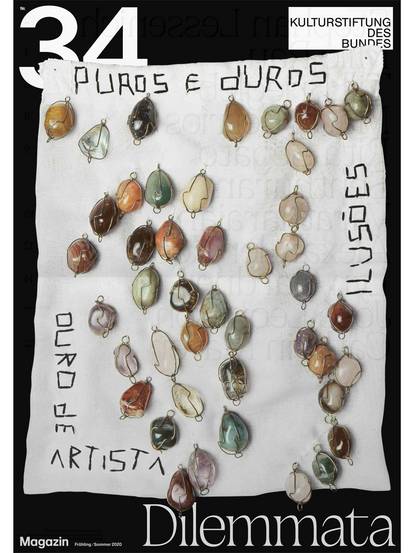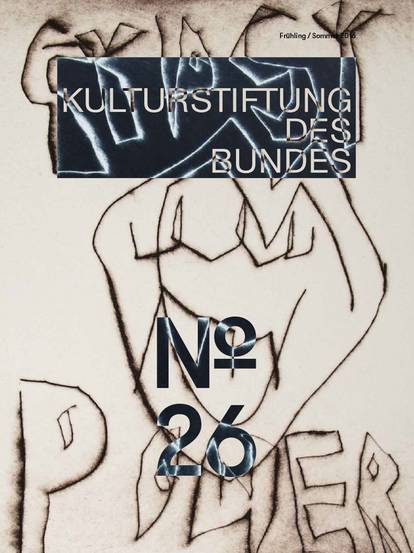What plot line excites your interest? In the first years following the discovery of HIV, the news stories about AIDS resembled sensational horror flicks and kitschy tearjerkers. Vladimir Čajkovac describes how the disease has been staged as a media spectacle.
“Once upon a time in America, in the heyday of urban consumer culture, a primitive, but lethal organism begins to devastate unsuspecting individuals amid their assiduous pursuit of pleasure. Death comes swiftly, and it is particularly gruesome. The first victims are typed as sexually promiscuous and have a history of drug or alcohol abuse. Each is deviant or marginal to the mainstream in some way. The organism also attacks women and, most pathetically, young children, but only in the last instance white, middle-class, heterosexual males who remain monogamous or chaste.
(…) Owing to a combination of political and economic factors, no effective action is taken, until the death rate escalates and the threat to society can no longer be ignored. (...) Once the media catch on, however, there is a barrage of irresponsible and exploitative journalism. Anxieties run high and produce hysterical fears that the peril may spread without limit, unless there are concerted efforts for precaution and general community surveillance.
In the end, three agencies rise up to meet the challenge: law and order, biomedical technology, and old-style ingenuity and self-reliance. (...) After much self-sacrifice and Herculean effort, the deadly organism is isolated, studied, and eventually wiped out. Many are dead, but American society can now return to normal.”[1]
What reads like a summary of the AIDS epidemic is, in fact, the plot line of an entirely different story, namely Steven Spielberg’s 1970s blockbuster “Jaws”. For the American literary scholar Daniel Selden, this short plot synopsis of the Hollywood movie offers an ideal scenario for outlining the essential aspects of the AIDS epidemic: uncontrollable nature, a deadly primitive organism, fringe groups and a proverbial heroic deed combined with traditional values. This thought experiment and analysis by Selden demonstrates how strongly our view of AIDS is influenced by formulas and scenarios which are already established in mass media.
“Based on a true story” is a formula often used and even more often misused by the film industry. It lends stories credibility and promises authenticity. Yet due to its malleable meaning, it can be manipulative. Obviously AIDS is an undeniable reality, but nonetheless, we must ask ourselves how and through what eyes we are perceiving the disease as an event, as a narrative and phenomenon.
The first example of a disease being staged as a media spectacle took place in 1885 in Newark, New Jersey when four children were bitten by a rabid dog.[2] After local media organised a successful fundraising campaign, the children were sent to Dr Pasteur in Paris in December 1885 to receive a new experimental treatment. The daily papers in the USA regularly printed lengthy reports about the trip and the progress the children were making in therapy. This relatively insignificant event attracted such overwhelming public interest in the media, that the children, upon returning, were invited to appear at the Globe Museum in the Bowery. There, among the displays, they sat upon a pedestal to be marvelled at by the visitors who, according to press reports, came in droves to see them. The crowds were so large that the museum remained open even at night.
People have an insatiable need for such intimate glimpses, and the rapid development of media technology in the 20th century made it possible to satisfy this need. And if ever there was a disease which delivered ample material for such a media spectacle, then it was surely AIDS. In the early 1980s, the viral epidemic of AIDS erupted simultaneously with what the American theorist Paul Treichler diagnosed as a cultural “epidemic of signification”.[3] In pace with HIV, the world witnessed the rampant spread of medical theories, rumours, fears, prejudices and interpretations which were used to describe, combat and understand this yet unknown disease.
Once upon a time in America, there was a monster ... In their musical theatre project AIDS FOLLIES, the artists Johannes Müller and Philine Rinnert explore precisely this spectacle surrounding AIDS and how it is perceived by society. The starting point of the project was the life of the alleged “Patient Zero”, Gaetan Dugas. Dugas died in 1984 at age 31 from kidney failure – caused by AIDS. Following his early death, Dugas was veritably demonised, for many accused him of being the culprit behind the spread of HIV in the USA. His life story was publicised for the first time in 1987 in the book "And the Band Played On" by the investigative and openly gay journalist Randy Shilts. The newspapers barraged their readers with speculations and false reports, for example, that Dugas intentionally transmitted the disease from the West to the East Coast of the United States, facilitated by his job as an airline attendant. Many have repeatedly expressed their doubts with this theory, but the legend of “Patient Zero” has stubbornly lived on. Only recently was Gaetan Dugas acquitted (once again) of any wrongdoing.
Shilt’s book was made into a movie of the same name in 1993. One scene showed Dugas’s character speaking with his doctors. Dugas appears a bit nervous, a bit arrogant, red splotches of Kaposi sarcoma visible on his neck, as he brags about his sexual contacts: “We’re talking about thousands of men all over the world, whose faces I cannot even remember ...” Gaetan Dugas may have not been “Patient Zero”, but he certainly infected numerous men with HIV because of his irresponsible behaviour.
The history of AIDs, however, began much earlier than that – at a hospital in Léopoldville, now Kinshasa, in the Democratic Republic of the Congo. It was there that Belgian and American scientists identified HIV in conserved blood samples. The anonymous samples dated back to the year 1959, one year before the country declared independence from Belgian colonial rule. Colonial exploitation and massive labour migration had ruptured the social fabric in the region to such a degree that HIV found fertile ground there in the mid-20th century. And this on top of the harsh working and living conditions in the rapidly growing city and the autochthonous injustices, especially with respect to sexual relations which enabled the virus to spread unchecked.
Most stories about AIDS begin at a somewhat later date, and with every retelling, they sound more and more like a fairy tale. Once upon a time in 1981 in San Francisco and New York, when doctors noticed asymptomatic conditions in five young, previously healthy homosexual men ...
Neither the media nor the general public showed any particular interest in the new disease in the years immediately following its discovery. It was the disease that afflicted “others”, depending on how one wished to define “others”. Interest in the subject of AIDS increased dramatically starting in July 1985. The first major news stories concerned the case of the teenager Ryan White, who was infected by HIV contamination blood, and the AIDS death of the actor Rock Hudson. Suddenly the disease had a face the public could identify with.
According to Judith Williamson, AIDS was either portrayed as a horror story or a melodrama: “Suffering becomes a commodity isolated from any systemic cause: just as the source of any problem can be located in Horror discourse in the Monster, equally its effects can be drained of any social dimension and lumped onto the individual Victim.”[4] In the AIDS narrative, HIV was certainly the central monster, but being a virus, it was inherently invisible. Ryan White was cast in the role of the innocent victim. Rock Hudson showed quite plainly that anyone could get infected, and despite the revelation of his double life as a homosexual, he was treated respectfully in light of his reputation as decent guy and favourite with the ladies. This left Gaetan Dugas to fill the role of the monster. And hardly anyone paid attention to the story of Robert Rayford which surfaced around the same time. It was the story of a black, officially heterosexual teenager, who died from AIDS in the heartland of America in St. Louis in 1969, and it was ignored, plain and simple.
Likewise, the memory of AIDS is supposed to be plain and simple: a plus, the ribbon, the triangle, the circle, a zero. The complex history and present-day circumstances of the AIDS epidemic have been and continue to be compressed into a few choice symbols which can be easily duplicated and distributed, symbols which do not offend anyone and allow each of us to easily participate in the global war on AIDS. However, if the disease is reduced to occasionally wearing a red ribbon, it softens the history of a hard and unfair battle and ignores the complex of race, class, sexuality, guilt and shame which are tied to HIV/AIDS. The repeated moral acquittal of “Patient Zero” does not make the reasons for his condemnation disappear. All the more important that the project AIDS FOLLIES presents and distinctly reminds us of the complexity underlying the virus panorama. In our present age which is so passionately taken with facticity, these images, these media portrayals and the realities which are influenced and shaped by them must also be tied back to the individuals and their fates.
[1] Daniel Selden: “Just When You Thought It Was Safe to Go Back in the Water ...” in The Lesbian and Gay Studies Reader, ed. by Henry Abelove et al., New York 1993, pp. 360–380.
[2] Bert Hansen: Picturing Medical Progress from Pasteur to Polio, A History of Mass Media Images and Popular Attitudes in America, New Brunswick (NJ) 2009, p. 396.
[3] Paula Treichler: “AIDS, homophobia and biomedical discourse: An epidemic of signification”, Urbana (IL) 1987, pp. 263–305.
[4] David Caron: AIDS in French Culture, Social Ills, Literary Cures, Madison (WI) 2001, p. 101.

![[Translate to English:] Magazine 38](/fileadmin/_processed_/f/1/csm_Magazin38_Cover-Vorschau_921x1230_689f428dc3.jpg)
![[Translate to English:] Magazine 37](/fileadmin/_processed_/b/c/csm_Mag37_Cover-Vorschau_921x1230_b5129fdb2a.jpg)
![[Translate to English:] Magazine 36](/fileadmin/_processed_/2/a/csm_Cover_Magazin36__issuu_2f3cef97bb.jpg)





![[Translate to English:] Magazine 30](/fileadmin/_processed_/c/b/csm_magazin30_vorschau_9005f773d3.jpg)














